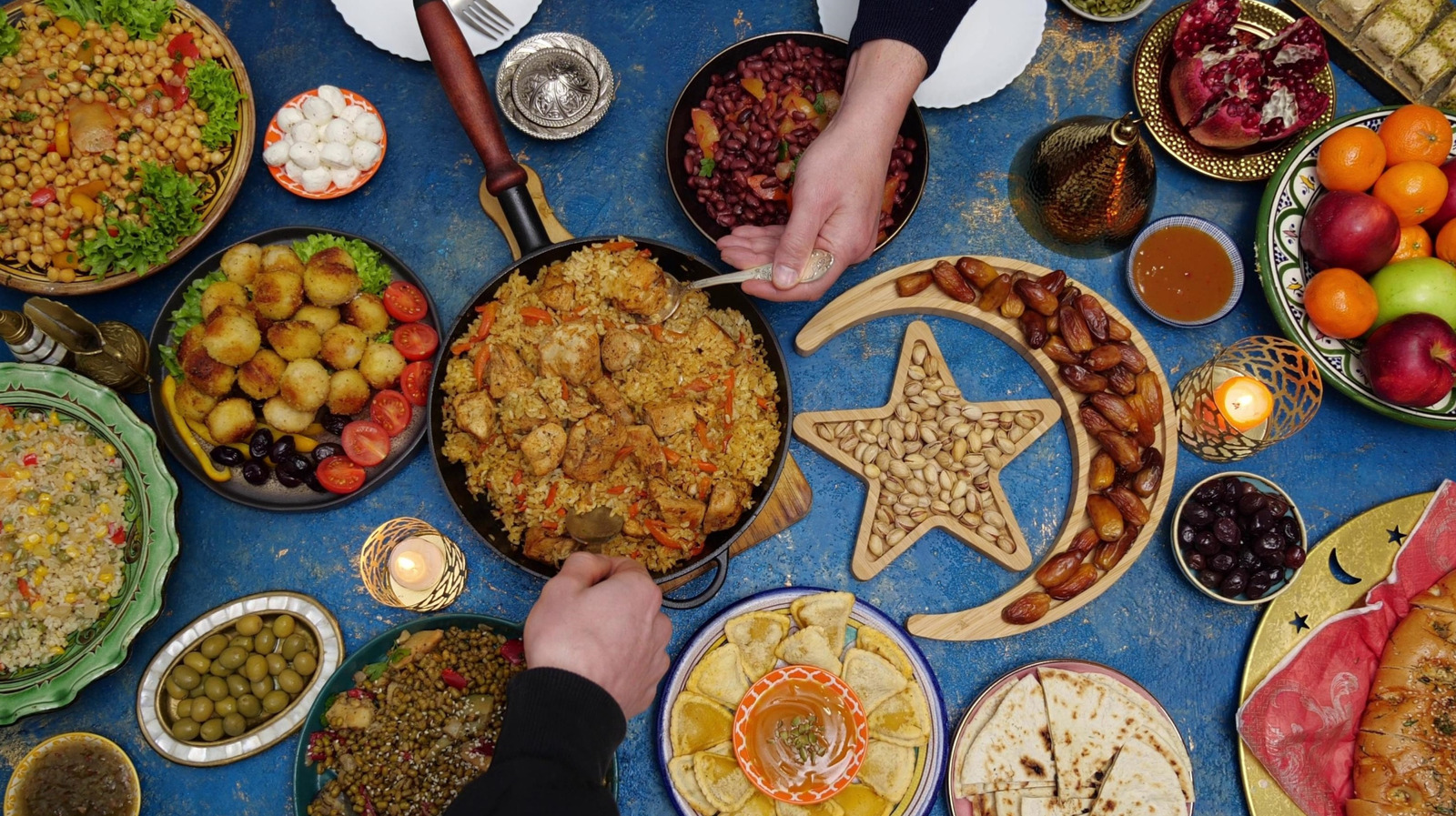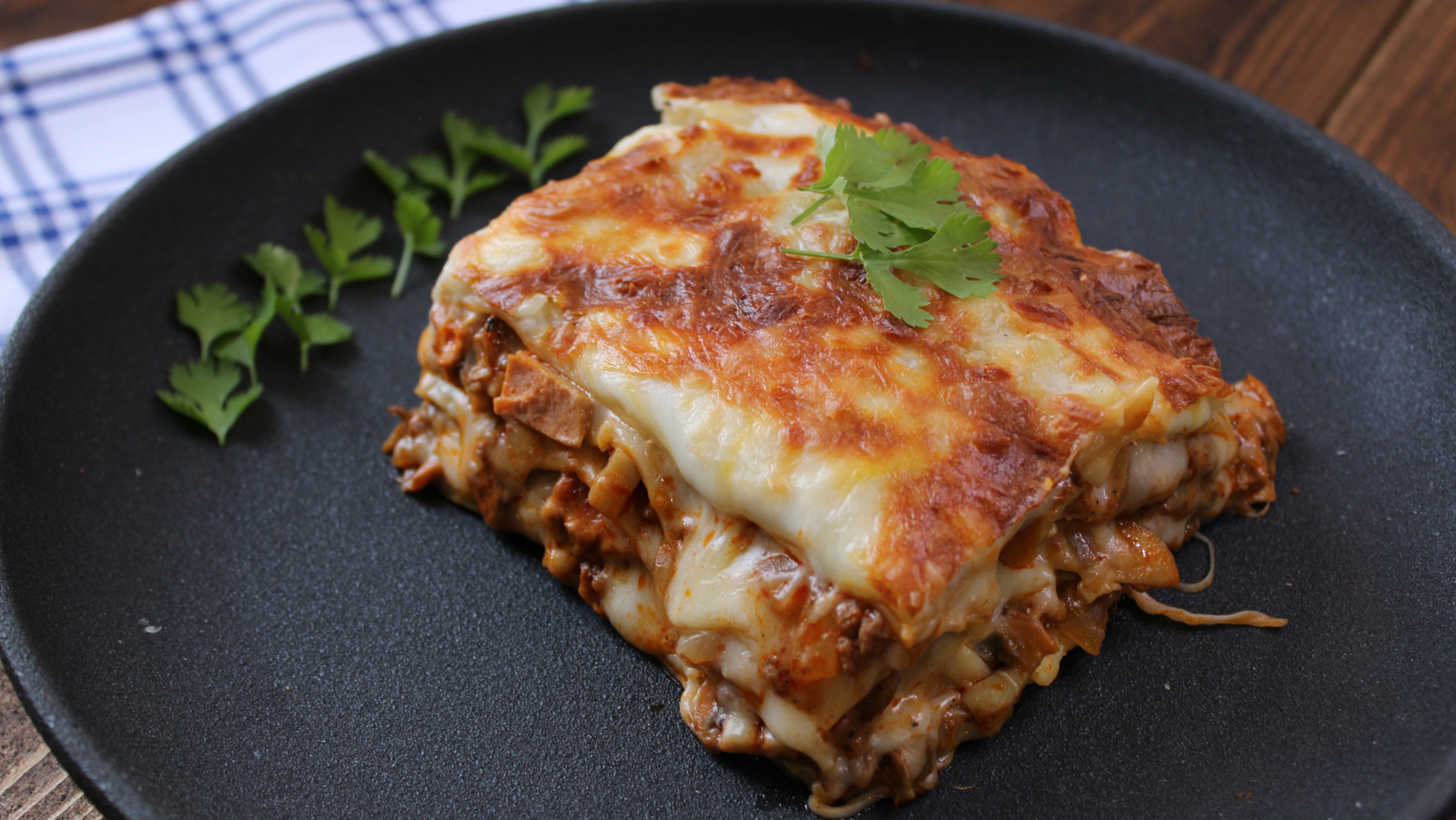
Each day of Ramadan is challenging — with the insistent rumble of hunger, dull haze of dehydration, and days that always begin before dawn — but it also feels rewarding, meaningful, and, indeed, sacred. This holy month is a time when Muslims fast every day from sunup until sundown. No food or drink (including water) is consumed during daylight hours in a practice that allows people to refocus on their faith, look inward, and live in gratitude.
Regular prayer, community service, charitable donations, and refraining from unjust acts are all part of Ramadan, as well. Each evening after sunset, and a glass of water or milk. And each day, they get one day closer to Eid al-Fitr (or Eid ul-Fitr).

This three-day celebration is marked by family gatherings, fairs and festivals, prayers, parties, and, of course, lots of food. After a period of abstention, Eid is a time to show appreciation for abundance. There are new clothes, gifts of money for the children, snacks, sweets, and celebratory feasts galore.
Meals that require long preparation times or are made easier by many hands are common — this is a time to pull out all the stops and bring family together to make it happen. Because Islam is such a diverse religion with deep cultural traditions spanning across continents, the food is highly varied. From spicy curries to homemade candy, classic Eid dishes are as varied as the places they come from.
These are some from around the world. Musakhan In Palestine, no celebration is complete without musakhan, and Eid al-Fitr is no different. In fact, musakhan is widely considered to be the national dish of the country.
It represents an undeniable connection to home and family, a quality that becomes even more important for Palestinian refugees that are unable to return to celebrate Eid. Musakhan consists of a huge pile of pillowy flatbread spread with tangy and sweet caramelized onions. The stack is topped with a crown of tender, warmly spiced roasted chicken, and lots and lots of fragrant, fruity olive oil is used throughout the dish.
The large, round pieces of yeasted bread are called taboon, named for the traditional clay ovens in which they are cooked. Soft and slightly chewy with a crisp outside, this bread is similar to Indian naan. Each piece gets topped with just a touch of chicken stock and plenty of deeply caramelized onions that are flavored with dried and ground sumac berries – a popular spice that lends pronounced notes of citrus.
Often, the bone-in chicken pieces are first boiled with ingredients such as black pepper, bay leaves, and cardamom and then finished in the oven with spices like sumac and allspice. Once the bread is piled high and chicken is arranged on top, the musakhan is garnished with a sprinkle of toasted pine nuts or almonds. It's a show-stopping centerpiece.
To eat it, there is no better utensil than your hands so you can get a bit of everything in each bite. Mansaf Similar to Palestinian musakhan, Jordanian mansaf is also an impressive layered affair. However, this dish is made with goat, sheep, or lamb, which is simmered until tender with aromatics and spices like onions, bay leaves, cardamom, and cinnamon.
While this may sound like the base of many stews, soups, and curries, it is the yogurt sauce that makes mansaf really stand out, and jameed is this secret ingredient. Jameed is a salted and dehydrated yogurt that imparts a unique tang and complexity to the dish — it has to be reconstituted in water beforehand. The jameed, yogurt, and homemade stock come together to create an unbeatable sour and savory sauce.
If the traditional balled jameed (referred to as stones) is not available, these days you can find a store-bought, shelf-stable, liquid version that makes a good stand-in. More impressive still is the way that mansaf is served. Pieces of a thin, traditional, torn-up flatbread called markouk cover the bottom of a huge platter, which is then topped with a layer of turmeric rice.
The meat and yogurt sauce get piled on top of that, and the whole thing is garnished with toasted nuts. This is a dish meant to be eaten communally and by hand, and a few people will gather around the serving plate to share in this special Eid dish together. Biryani As far as special occasion dishes go, biryani is at the top of the list in Muslim homes across South Asia.
At its core, biryani is seasoned rice, but, really, it is so much more than that. Meats like goat, lamb, and chicken are marinated and then cooked down into what is essentially thick, ultra-flavorful curry. Ingredients such as onions, garlic, ginger, cloves, cardamom, turmeric, cinnamon, bay leaves, and red chile powder flavor the base.
Then, the meat and gravy are layered with parboiled rice, and everything steams together to finish cooking. The result is incredibly aromatic, beautifully colored, and when all the different layers are mixed together, every single bite is imbued with rich, complex flavor. South Asian countries such as India, Bangladesh, Pakistan, Sri Lanka, and Nepal all have their own versions with innumerable variations.
However, for a celebration like Eid, cooks are likely to make it a little extra special. They might throw in some extra saffron, use a whole, uncut chicken instead of pieces, or top the final dish off with fried onions, toasted nuts, and fresh herbs. Pilau is another celebratory rice dish from South Asia that you will often find on the Eid table.
It is well-seasoned, perfumed with similar warm spices, and loaded with meat, but the main difference is that it is a one-pot dish. The rice and meat base are simmered together, rather than being layered and steamed. Lepet Lepet — a variety of traditional rice dumpling or cake — is very important in Indonesian celebrations of Eid.
Not only is it a sweet, rich, and satisfying dish, but it also holds a lot of symbolic relevance. Lepet is typically made with glutinous rice and coconut milk, and it can also have ingredients like shredded coconut, peanuts, or red beans. The mixture is wrapped in young coconut or banana leaves, formed into a cylindrical shape, boiled, and then hung to air dry.
Another version uses a corn filling and corn husk wrapping. The spiritual significance of lepet in Indonesian culture predates Islam, but the special dish has since taken on significance in the Muslim faith, as well. Metaphors related to this dish are abundant.
The shape represents the symbolic bridge that every Muslim must cross as they reckon with their good and bad deeds. The white color of the rice can symbolize the purity that everyone is striving for, while the stickiness can represent the tendency for humans to make mistakes. The woven wrapping demonstrates the interconnectedness and complexity of human relationships.
Because Eid is also meant to be a time to make amends, unwrapping each layer shows how resolving problems must happen slowly and intentionally. Beef rendang When beef rendang is on the table, you know it's time to celebrate. Equally at home at a wedding party or an Eid dinner, beef rendang is a slow-cooked dish that is always made for special occasions in countries such as Indonesia, Malaysia, and Singapore.
The combination of aromatics, chiles, coconut, and fall-apart tender beef makes this a truly memorable dish. The flavor backbone of beef rendang is made up of earthy, sweet, and piney galangal, vibrant makrut lime or turmeric leaves, citrusy lemongrass, and, of course, plenty of garlic, ginger, onions, and dried red chiles. Coconut is another irreplaceable ingredient.
Fatty and creamy coconut milk makes up most of the liquid for this curry, and roasted, dried coconut called kerisik adds subtle sweetness and texture. After a few hours of cooking, the cubed beef easily shreds, and all the liquids have cooked down into a thick, concentrated gravy. Like many curries, beef rendang can be eaten with flatbreads or steamed rice, but it can also be served with ketupat or lemang.
To make ketupat, white rice is first packed into triangular baskets or wrappings woven from coconut palm leaves and then boiled. Lemang, on the other hand, is cooked over an open fire, so it has a smoky taste. For this variety of rice cake, a mixture of coconut milk and glutinous rice is poured into banana leaf-lined bamboo stalks.
Both these dishes are traditional accompaniments to beef rendang. Doro wat If you have been to an Ethiopian home or restaurant, or to the country itself, chances are that you've sampled doro wat. Though this dish is wildly popular all year round, that does not mean that it isn't worthy of a holiday like Eid.
After all, dishes like this one are classic for a reason. Doro wat is essentially a chicken stew flavored with tons of onions and plenty of berbere. Berbere is an Ethiopian dried spice blend that features chile peppers and many other spices.
It is always spicy, though the heat level varies, and it typically includes ginger and fenugreek. It can also have ajwain (which is herbal and somewhat bitter), allspice, black pepper, cardamom, coriander, and more. The dish starts by cooking down a whole lot of finely chopped onions for at least half an hour.
Interestingly, no fat is used, so the natural liquid from the onions themselves concentrates. Only after the onions are deeply caramelized and softened is fat added, and traditionally this comes in the form of niter kibbeh — a clarified butter flavored with spices and herbs. Chicken, berbere, and even more spices go in, and then everything simmers together.
Hard-boiled eggs are the final touch to this rich, complexly flavored curry. Doro wat is always served with an Ethiopian fermented flatbread called injera, which is made using flour from an called teff. Tufahije Made with sweet poached apples, a honeyed and spiced walnut filling, and luscious whipped cream, tufahije is a dessert popular during Eid in Bosnia, Herzegovina, Serbia, and Macedonia, though it likely originated in the area around present-day Turkey.
While this recipe uses just a few ingredients and is pretty straightforward to prepare, the effect is rather elegant, especially since the apples are kept whole or simply cut in half. And of course, the flavor combination is absolutely delicious. Sometimes the poaching liquid for the apples is simply flavored with fresh lemon, and other times, it might have .
Walnuts are finely chopped to make the filling and flavored with ingredients like honey, cinnamon, butter, and even crushed crisp cookies. The whipped cream on top is the perfect luscious finish to cold, room temperature, or warm versions of this dessert, and whole, fresh cherries are also a popular garnish. Sheer khurma Sheer khurma is a quintessential Eid dish in countries such as India, Afghanistan, Iran, Bangladesh, and Pakistan.
Similar to , sheer khurma is a creamy and sweet porridge, but instead of rice, it uses thin vermicelli noodles. They are toasted in ghee until deeply golden brown and then simmered in milk, cream, and sugar. Dates are also an essential and traditional component, but there are lots of other versions out there that include a variety of dried fruits and nuts.
Cloves, saffron, rose water, cardamom, or kewra water (which is made from the pandanus flower) are some of the ingredients that might flavor sheer khurma. What's particularly special about sheer khurma is that it is traditionally eaten on the morning of Eid. Special Eid prayers take place in the morning after sunrise, and sheer khurma is often a much-anticipated breakfast eaten before or after those prayers.
In cultures where this is a significant dish, it is likely the first meal someone eats during daylight hours following a month of daily fasting. It is also commonly served for dessert following an Eid feast. Lokum Eid al-Fitr is sometimes known as the Festival of Sweets, Sweet Eid, or the Sugar Feast.
After a month of piety and restraint, indulging in special sweet treats is particularly meaningful — for adults and children alike. In Turkey, Bosnia and Herzegovina, and Romania, that means lokum (or rahat lokum) is the ideal sweet snack, coffee accompaniment, and after-dinner treat. Also known as Turkish delight, lokum is a chewy candy made by cooking together sugar, cornstarch, and a variety of flavorings.
It is then formed into a bar, portioned into bite-sized pieces, and dusted generously with powdered sugar and cornstarch. This treat often has fruity and floral flavors such as orange blossom water, rose water, lemon, fresh orange, mint, or pomegranate. Other versions feature nuts, dates, coconut, and various dried fruits.
, it is important to allow it to chill and set sufficiently before tossing it in the sugar mixture. This dish can range from charming and simple to very elaborate, with specialty products incorporating a wide variety of flavors, textures, and colors into each candy. Maamoul For many people, , and with maamoul, they are also the most delicious part of Eid.
In countries of the Levant like Lebanon, Jordan, Palestine, and Syria, these shortbread cookies are a fixture in celebrations around this time. A nearly identical cookie can be found by the name of kahk in Egypt or kombe in Turkey. The dough is made with semolina or white flour (or both), and they are commonly filled with date paste, walnuts, or pistachios.
In some places, you can even find a version of these cookies filled with lokum. What makes maamoul extra special are the intricate designs. The raw, filled cookie dough is pressed into specially designed wooden molds to shape them before baking, resulting in a myriad of shapes, impressions, and sizes.
Often, they are finished with a dusting of powdered sugar. The outside of the cookie is tender, crisp, and mild, while the inside is sweet and rich. For some, the maamoul is a metaphor, with the outer layer representing the difficulty of the Ramadan fast and the filling symbolizing the sweet reward of Eid.
Recommended.














